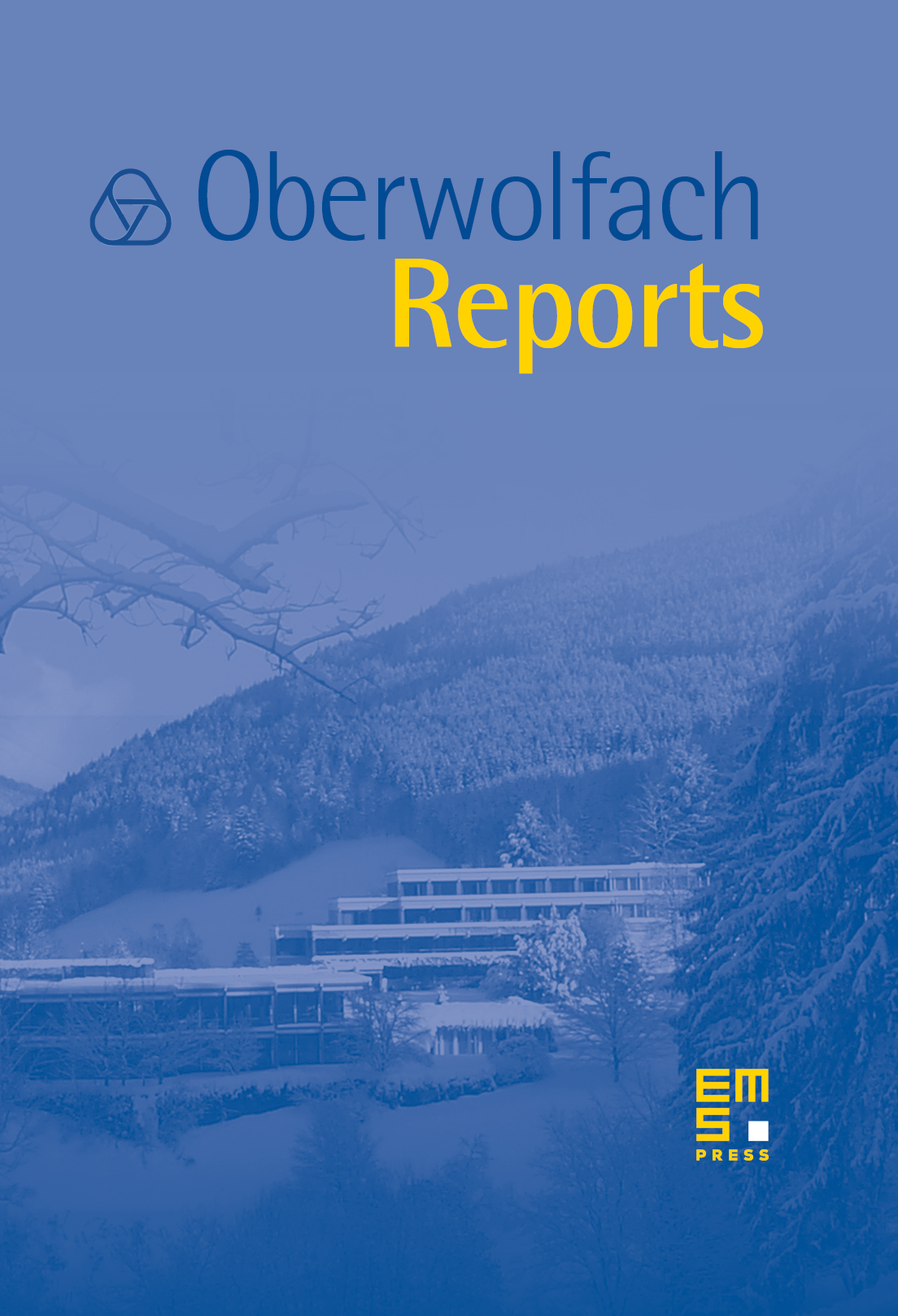Real Analysis, Harmonic Analysis and Applications to PDE
Detlef Müller
Christian-Albrechts-Universität zu Kiel, GermanyElias M. Stein
Princeton University, United States

Abstract
Major areas and results represented at the workshop are:
I. Methods in harmonic analysis
(a) Multilinear analysis: this is an outgrowth of the method of “tile decomposition” which has been so successful in solving the problems of the bilinear Hilbert transform. Recent progress involves the control of maximal trilinear operators and an extension of the Carleson–Hunt theorem.
(b) Geometry of sets in : This includes recent progress on the interaction of Fourier analysis and geometric combinatorics related to the Falconer distance problem.
(c) Singular integrals: A break trough has been obtained on singular integrals on solvable Iwasawa - groups, which require a new type of Calderón–Zygmund decomposition, since the underlying spaces have exponential volume growth. Further significant progress involves the theory of operator-valued Calderón–Zygmund operators and their connection to maximal regularity of evolution equations.
(d) Oscillatory integrals, Fourierintegral operators and Maximal operators: This includes estimates of maximal operators related to polynomial polyhedra and their relations with higher dimensional complex analysis, sharp estimates for maximal operators associated to hypersurfaces in estimates for degenerate Radon transforms and linear and bilinear estimates for oscillatory integral operators, as well as optimal Sobolev regularity for Fourier integral operators.
II. Applications to P.D.E.
(a) Dispersive linear and non-linear equations: Far reaching new approaches to dispersive estimates for Schrödinger equations via coherent state decompositions and a related new phase space transform adapted to the wave operator were introduced. Further significant progress includes - estimates respectively blow up rates for eigenfunctions and quasimodes of elliptic operators on compact manifolds with and without boundary, and related problems for globally elliptic pseudodifferential operators, and well-posedness of the periodic KP-I equations. All these results are based in part on important ideas in harmonic analysis (such as I(d) above).
(b) Schrödinger operators with rough potentials: This includes quantitative unique continuation theorems and their relations with spectral properties and the study of embedded eigenvalues of Schrödinger operators.
The meeting was attended by 50 participants. The official program consisted of 23 lectures, and left sufficiant room for further activities, such as self-organised sessions and discussions among groups of participants. The organisers made an effort to include young mathematicians, and greatly appreciate the new joint program of the Oberwolfach Institute and the american NSF, which allowed to invite several outstanding young scientists from the United States.
Cite this article
Detlef Müller, Elias M. Stein, Real Analysis, Harmonic Analysis and Applications to PDE. Oberwolfach Rep. 2 (2005), no. 3, pp. 1679–1742
DOI 10.4171/OWR/2005/30